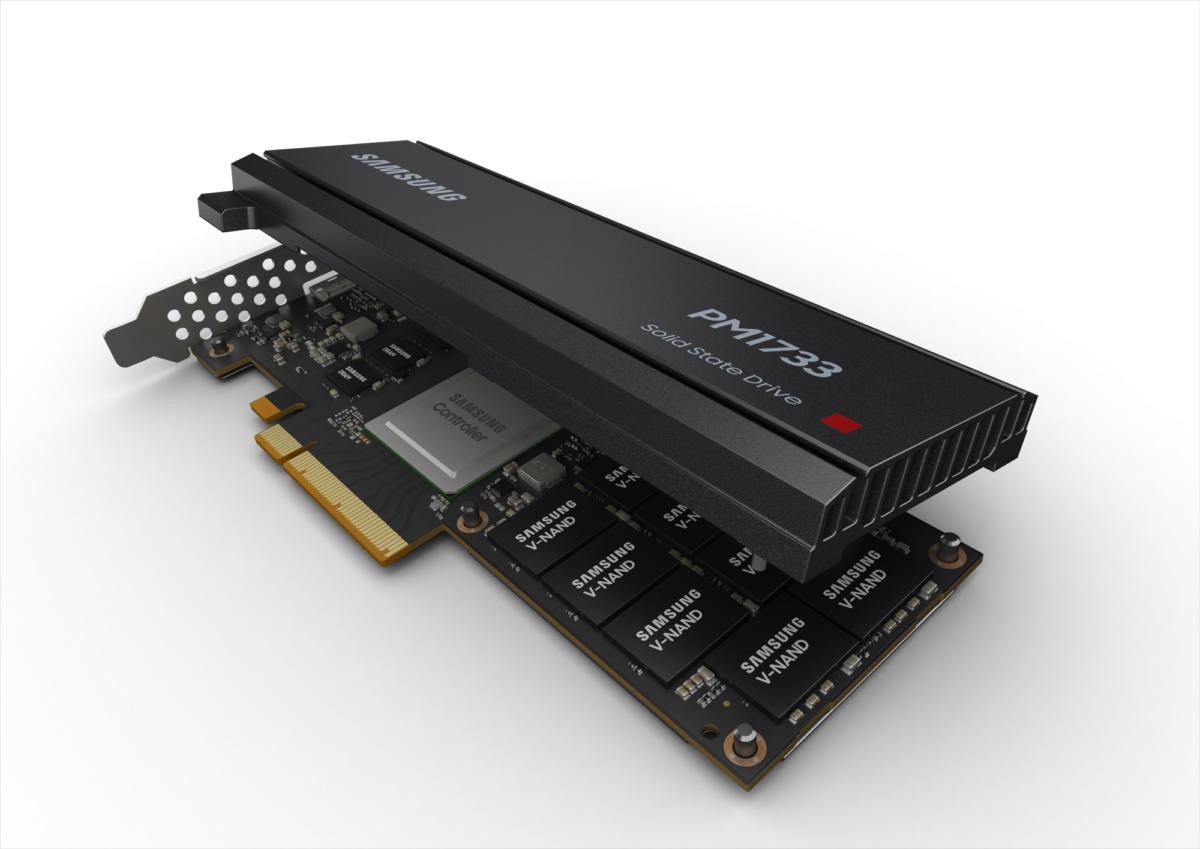Samsung released an industrial-grade SSD with the maximum capacity of 30.72TB
Samsung introduces three new software features into PCIe 4 industrial-grade SSD
In early August, Samsung released an industrial-grade SSD, PM1733, which uses a PCIe 4.0 bus and uses Samsung fifth-generation TLC V-NAND flash, each with a capacity of up to 512Gb. It will come in the U.2 form factor in capacities of 0.96TB, 1.92TB, 3.84TB, 7.68TB, 15.36TB and 30.72 TB. Samsung released PM1735 and introduced new software features into both SSDs.

Software features are the focus in this new release. Let’s take a look. The first new technology called FIP(Fail-in-Place)can make SSD remain work without broken. It scans the NAND chip during SSD operation and transfers the data on the faulty chip to the NAND flash in operation. For example, PM1733 with the maximum capacity of 30.72TB use 512 NAND chips, where FIP technology detects problems with any one chip, it activates the chip-level error processing algorithm, while the SSD will remain operating in a high-performance state.
The second one is SSD virtualization technology, which allows a single SSD to be sliced into up to 64 virtual SSDs, providing a separate virtualization space for multiple users. Supplier of cloud storage and cloud hosting service will support this technology, which can help service providers allocate resources. It can also enable SSDs to take on some work previously done by the CPU, thereby reducing CPU usage.
Finally, Samsung introduced machine learning to SSDs, known as V-NAND machine learning, which helps accurately predict and verify the characteristics of each cell and detect any differences in the circuit through big data analysis. Today the voltage control is more stringent in the flash after SSD used multiple layers of stacked flash. Through this technology, SSDs can achieve better voltage control on their own, thereby improving the stability and reliability of the entire driver.
In addition, Samsung has introduced a new member of the PCIe 4.0 SSD family, the PM1735, which is no different from the PM1733 in the parameter. PM1735 PCIE 4.0-based SSD will feature less capacity as the PM1733, but three times the drive writes per day.

Although none of the drives or software are aimed toward consumers, the fact that Samsung has PCIe 4.0 SSDs on tap for data center customers likely means a PCIe 4.0 consumer can’t be too far off.
200TB SSD is not a dream
SK Helix has announced the successful development of the 128-layer stacked 4D NAND flash and has entered the production phase. While other vendors are racing to launch new products of NAND Flash, stack technology has yet to reach its limits. SK Helix plans to launch 800-plus-layer NAND flash in 2030, when it will be easy to create 100TB SSD to 200TB SSDs.
SK Helix is currently developing a 128-layer stacked 4D NAND flash memory, which will be mass-produced in Q4 2019. In addition, SK Helix has unveiled a new "PE8030" SSD with a PCIe 4.0 x 4 interface connection, which offer capacities from 800GB, 1600GB, 3200GB to 6400GB. The sequential read and write speed of it reach up to 6200MB/s, 3300MB/s, while 4KB read and write speed reach up to 950K IOPS and 260K IOPS.
